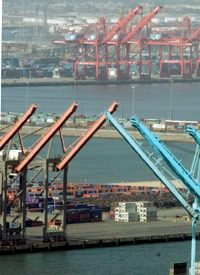
Despite rosy earnings reports from some closely watched corporations, the Great Recession is far from over, according to the latest economic data from the Commerce Department. America’s GDP, which shrank at an annualized rate of 6.3 percent in the last quarter of 2008, was expected to decline at a rate of about 5 percent for the first quarter of this year. Instead, it fell 6.1 percent, suggesting that last year’s meltdown continues more or less apace.
Exports shrank by 30 percent worse than last year’s fourth quarter showing — and business inventories declined by more than $103 billion. Consumer spending did rise, although not enough to offset other declines.
Such statistics are notoriously unreliable indicators of future economic growth, predicated as they are on the Keynesian economic assumption that spending and consumption, not savings, spur economic development. We know anecdotally that Americans have been tightening their belts and saving for some time now, which cannot but have a positive effect on the economy in the long run. Savings, after all, is the basis for future investment and growth. It is savings that funds both consumption and capital formation, that allows jobs to be created and products to be manufactured. And nobody knows how much money is now being saved to allow future economic growth once this recession has finally run its course.
However events transpire, the latest economic numbers show economic output declining for three straight quarters for the first time since 1974-1975, and the steepest decline in exports since 1969. There can be little doubt that more pain lies ahead, and that this recession has wrought and will yet work profound changes on the American economic and political landscape.



